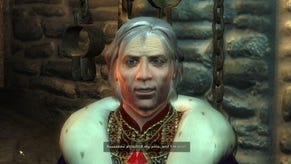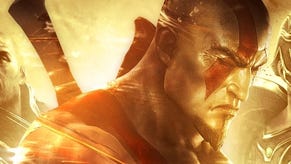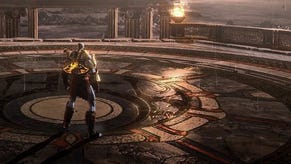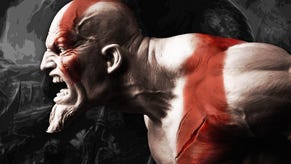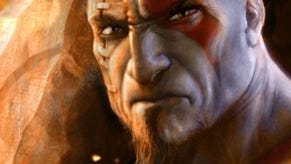God of War III
Bye, Zeus.
This explosive introduction revels in shifting perspectives to almost Mario Galaxy proportions, sending the hulking Kratos running up, underneath and over things, clinging to the brambles above him to negotiate sudden drops, or being flung across vast chasms and saving himself with a sudden chain-swing at the last moment. Meanwhile, the background tears up in blasts of colour and light as towering gods with designs straight out of Jack Kirby decimate the landscape.
Even before the credits, then, this is a game where something is always erupting, where around the next corner you're going to see something bigger, crazier, uglier, more beautiful, than what you saw around the last, whether it's a three-headed tiger leading an army of clanking skeletons straight at you, or a glimpse of the gigantic Chain of Balance that buckles the warring worlds of man and gods together.
Man and gods, eh? The wider narrative of God of War III is essentially a bickering domestic soap opera between characters the size of fjords. These hulking misfits provide the game with its regular bosses, as Kratos does a bloody-fingered re-editing of the classics which suggests that the real reason Christianity eventually took hold in Europe wasn't because it had a better after-life package, but because there was nobody else left upstairs.
It's a tantalising list of targets, each familiar name accompanied by an unlikely twist. Hercules, when he finally arrives, is a jealous meat-face, his hulking body covered in scar tissue. Helios is a flashy gadabout nipping around arrogantly in a shining chariot, and Hermes is a catty know-it-all whose backchat indicates that he could have had a lucrative future as a judge on televised talent shows if he hadn't run across a large purple man who really wanted to borrow his shoes.
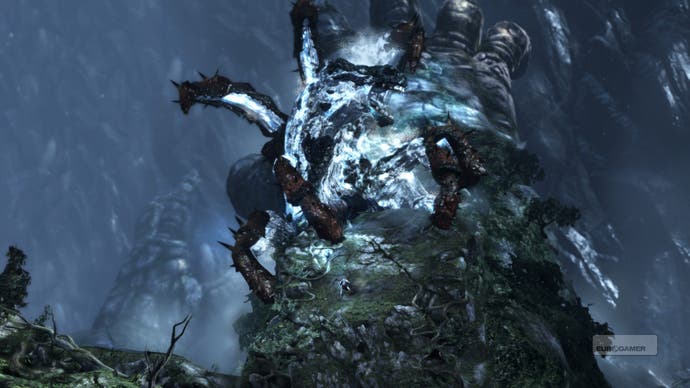
Along with the grim designs and oddball characterisations, as ever with this series, each boss has a delightfully creative way of expiring, with multi-part fights playing out in some extremely queasy bursts of stage-management, whether you're piling somebody into a wall of spikes, ripping the fingernails off of a giant's hands, or sinking your hooks so deep into the bubbling flesh of a colossus that you tug out their very soul. Yuck.
And it's the final moments of an encounter in which the game twists the knife somewhat. An early boss-clubbing flips the perspective to the deity's viewpoint in his dying moments, as you pile on a final brutal lamping. It's a chance to see what manner of monster you're playing as, and it actually got through my skin a little, hardened as it is by years of headshots, disembowelments and off-the-chart Pringle consumption.
The game threaded in between the god-mashing lives by a handful of simple, entirely agreeable rules that should hardly need reiterating to series veterans. Rule one: all statues should eventually come to life eager for a fight. Rule two: every 30 minutes you should either get another power, a new weapon, or something really dazzling and huge to work over. Rule three: almost every one of life's problems can be solved by ripping several people's heads off.

Occasionally someone flings a puzzle your way. A minority of them are pretty limp (there's a truly ghastly Guitar Hero moment), but most are fairly clever this time around, riffing on the likes of Portal and Echochrome while making the mechanics seem new again, blending devious simplicity with an endless gift for conjuring pretty vistas. The best, however, are more than mere palate-cleansers - they're sharp and ingenious and peculiarly comic. Finally, the very best are physics brainteasers that involve kicking dogs around.
Most of the game, however, is still given over to fighting. God of War's combat may never have had as much depth as some of its competitors, but it makes up for it with freakish beauty and a devastating talent for creating just the right hit response. The handful of attacks for each weapon are very satisfying to use, and the feedback is horrible and delightful as heads rupture, limbs flail, and hot blood splashes onto polished marble floors.
There are new touches, like a battering ram move that you should definitely work out of your system before the next time you pick up your three-year-old to give them a friendly ride on your shoulders, but the series' classic combos are waiting for you like old friends. There are some truly brilliant weapons, too: different kinds of chains to smack people about with, one of which contains a brutal electrical kick, that good old flaming bow and arrow, metal boxing gloves and a super-powered torch called the Head of Helios. Because it's a head. And it belonged to Helios. (Guess how you get that.)

